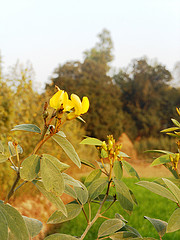Despite being the largest producer in the world, India has persistently faced a deficit in pulses for over two decades. For the past three decades, the annual production of pulses in the country has stagnated at around 11-14 million tons. With limited production and rising demand (because of increase in population), the resulting demand-supply gap in pulses has been met through imports. But does these imports help in mitigating price pressure because of excess demand? Over the years, increasing volume of imports accompanied by rising domestic prices brings us to the question: How effective are imports in controlling pulse prices?
A recent IFPRI discussion paper titled “Cooling effect of import on price: The case of Pigeon Pea in India” tries to address this question. The authors study the effect of imports on price for pigeon pea, an important pulse in India (both in terms of production as well as consumption). The study focuses on answering three specific questions:
- Do the imports have a cooling effect on the domestic price of pulses?
- What is the nature of the effect on prices; do imports bring down prices or just help arrest their rates of increase?
- How long does it take for imports to have an effect on prices?
To answer these questions, it requires a particular set of data that needs to be disaggregated (up to variety level) and i.e. available at high frequency. These requirements are generally not met in standard international trade dataset. This study uses a novel approach of using the highly disaggregated customs dataset at daily frequency. Apart from providing significant details on ports and product description, the customs data also helps in dating imports. The study maps imports on domestic wholesale price index for each week for pigeon pea to study their co-movements as well as their inter dependencies.
Realizing that there can potentially be lagged effects of imports on prices, the study looks at the effects in a bi-directional setting where imports are allowed to follow price changes just as price changes can follow imports. With this unique matching of imports and prices, the study finds that both the variables move together in the long run which researchers technically refer to as co-integration. Studying imports and prices in this framework is particularly interesting since it helps to distinguish short term import-price dynamics from the long term dynamics.
The key findings of the paper are that a percent increase in imports is expected to bring down prices by 3 percent in the long run. In other words, over the long run, imports do tend to cool prices. The findings for short run dynamics are comparatively nuanced where the cooling effect entails moderating the rate of price increase over a reasonably long time span rather than bringing the prices down spontaneously. Spelling out these effects can help the government in policy about importing pigeon pea and in assessing what role imports can play in price management. The policy implication is to explore ways for imports to be made more effective (with greater volume for example) in preventing frequent price rises that have become a regular phenomenon in pulses.



